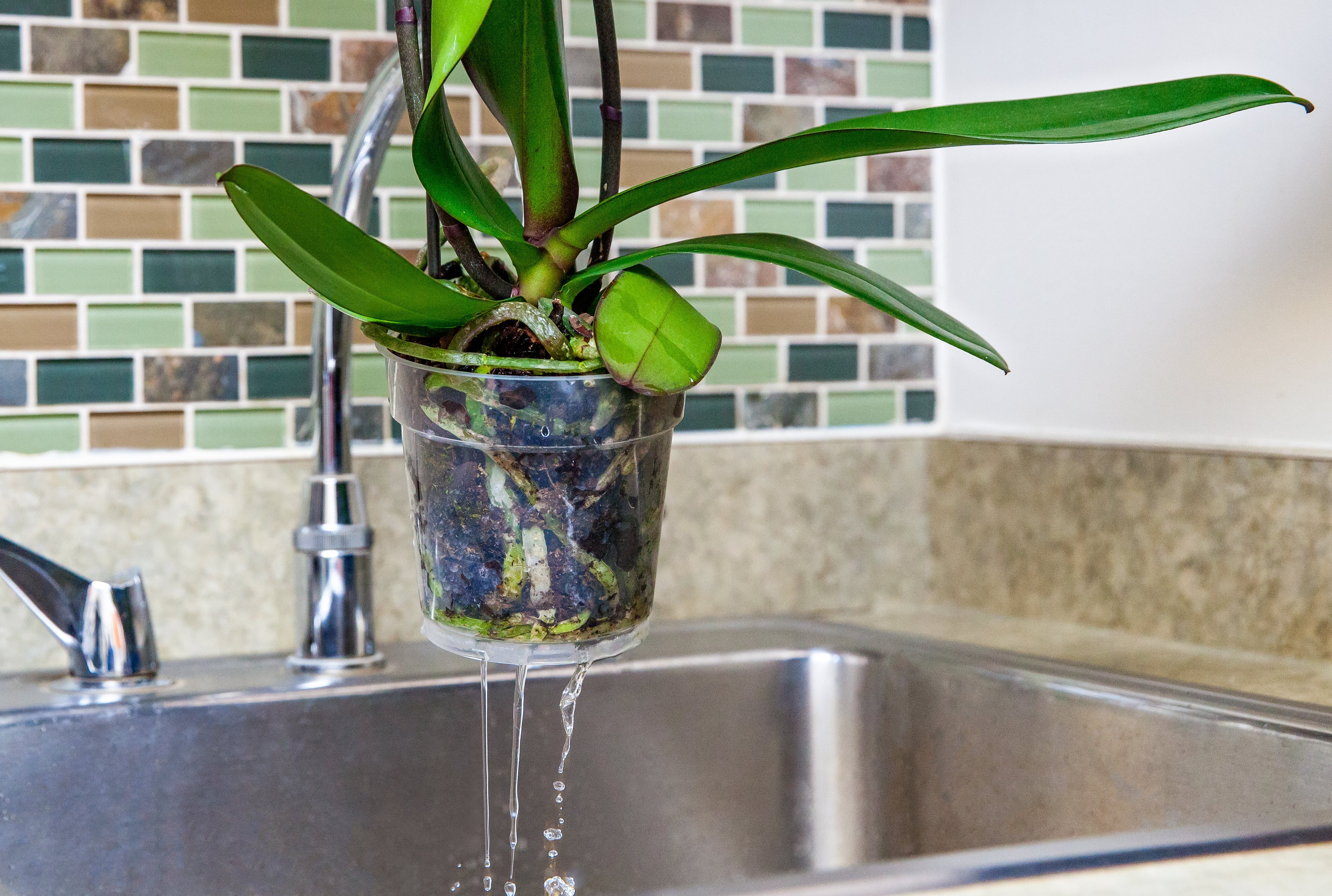Is My Orchid Underwatered? How to Treat Dry Orchid Roots
Much of the conversation around watering orchids is devoting to making sure your plants don’t get too much water. However, not getting enough water can also be dangerous to orchid health. Often, in an effort to ensure they aren’t overwatering, orchid owners end up depriving their plants of much needed hydration.
The best way to ensure your orchids are always receiving the proper amount of water is to follow the ice watering method of placing three ice cubes directly on top of your orchid’s media once a week (or one or two cubes, for smaller orchids). The slow melt of the ice cubes helps keep your orchid’s roots from becoming oversaturated and helps your orchid get the right amount of water on a consistent basis. The slow drip of the melting cubes through the media mimics the drizzling rain in the orchid's natural environment.
Will ice hurt your orchid? No -- ice is a safe and effective way to water your orchid!
However, if you’ve struggled to get on a consistent watering schedule and are worried you’ve been depriving your plant, there’s a simple way to tell if your orchid has been getting enough water: the roots. Healthy, well-watered roots are usually bright green and pliable, but water-deprived roots are greyish-white in color and can become dry or brittle. If your orchid has dry roots, take steps immediately to rehydrate your plant.
3 Steps to Treat an Orchid With Dry Roots
1. Try getting back on a normal watering schedule.
Before you go to any extremes to rehydrate your orchid, try putting your orchid back on a normal watering schedule of three ice cubes per week. Make sure your ice cubes equal about 1/4 cup of water when melted.
2. Make sure other environmental factors aren’t the cause.
If your orchid is located near a vent or a drafty area, it might be causing the roots to dry out regardless of your watering schedule. Move your orchid to an area with a consistent temperature. You can tell if an orchid is extremely dehydrated by watering it and checking the roots within 1-2 days. If they're already white/silver again, your orchid is very dry and is soaking up the water fast.
3. Soak the roots and bark.
If the first two steps haven’t solved the problem and you're still seeing signs of dehydration, soak the orchid roots and bark of your orchid for two minutes in the sink or a bucket of tepid water. Drain thoroughly before returning to the decorative pot.
Once your orchid's roots are replenished, return to your usual watering schedule and stay consistent. You should see improvement!









